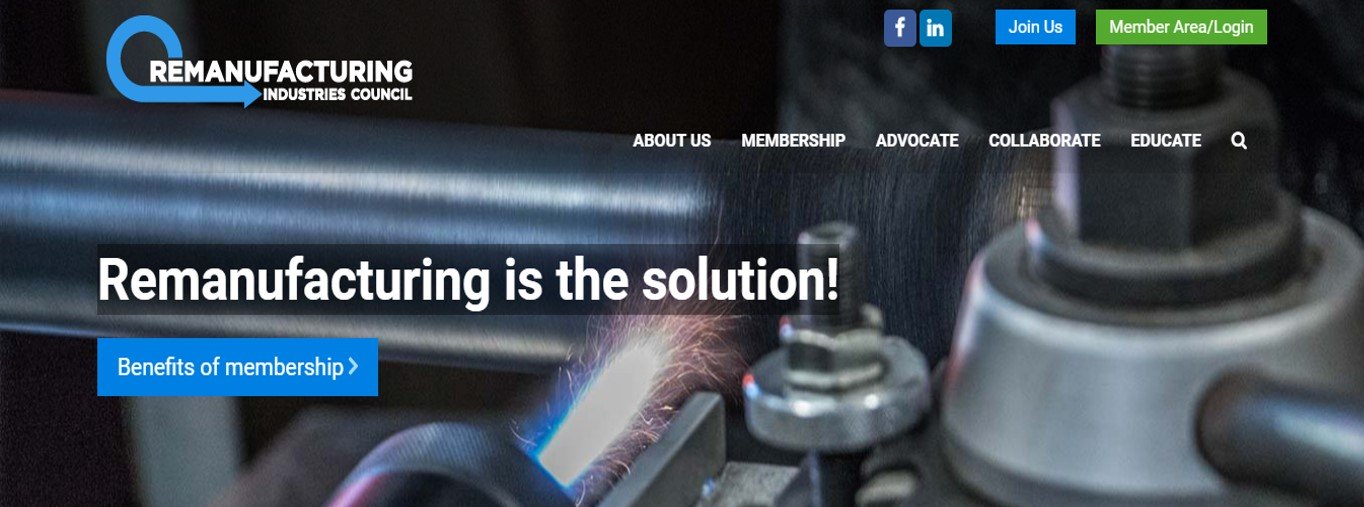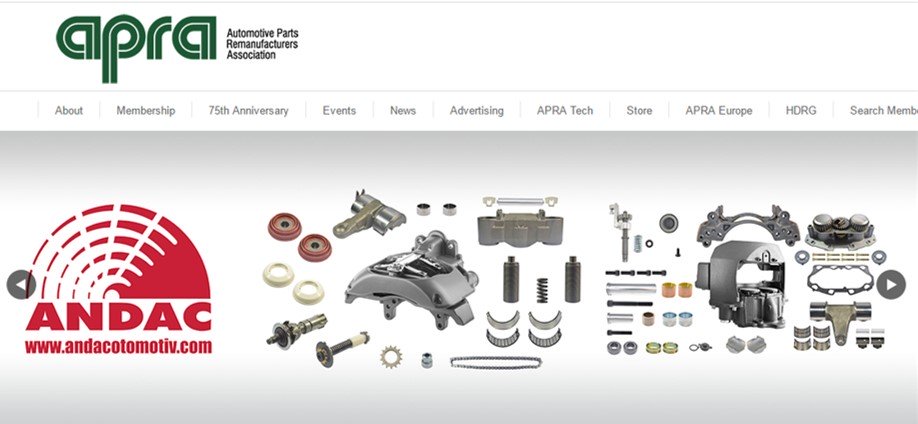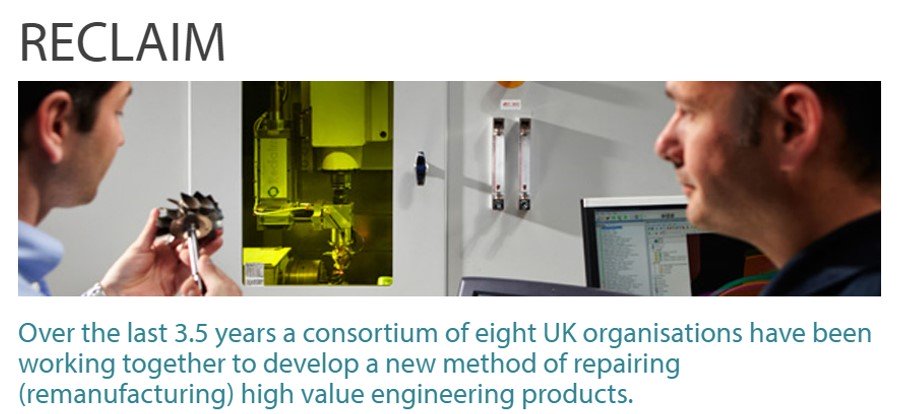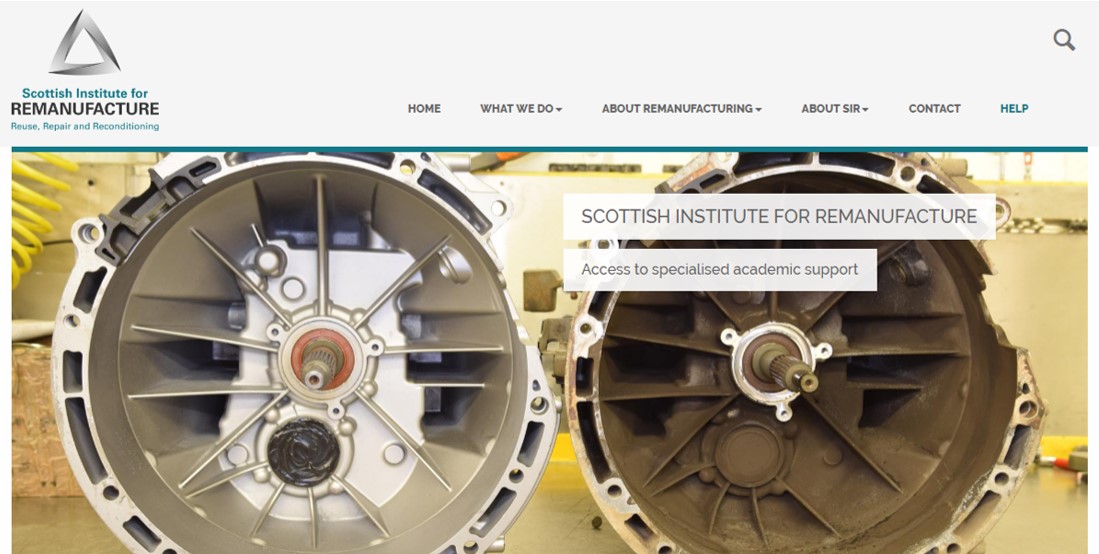'Hands-on Help for SMEs' and Smart Technical People'
Remanufacturing Opportunities for Small Businesses
Remanufacturing
It's all about returning used products to their original specification and performance. How? By repairing, restoring and replacing worn product parts
Remanufacturing Business Help Here...
Remanufacturing Business Help for SMEs
How much do you know about Remanufacturing? When was the last time you heard somebody talk about it and spell out the possibilities for SMEs or contract engineers? Could you do with some Remanufacturing business help?
The reality is remanufacturing represents a huge opportunity for small manufacturing and engineering businesses, yet surprising few engineers and SME engineering business owners and managers have even heard of it. Well, with a little remanufacturing business help below, we'll illustrate how SMEs can benefit, obtain new orders and grow the organisation in the process. Likewise, engineers can increase their awareness, skills and employability in this fast growing area.
So, what is Remanufacturing?
Remanufacturing is the process of dismantling, refurbishing and rebuilding used products to their original specification and performance. This is achieved by improving individual components and assemblies in a range of ways. These may include repairing and replacing worn, damaged or obsolete parts. Also cleaning, reusing and testing old parts may form part of this process. The range of reconditioning activities mentioned above illustrate how remanufacturing is a more holistic, complete process, where customer expectations of a used product's performance are the same as if it were brand new. Warranties for remanufactured products may or may not be different from those of the original supplier. In summary then, remanufacturing will typically involve disassembly, improvement, rebuilding and testing.
Remanufacturing - Key Advantages...
It's Cheaper! For the end-user, remanufactured products are typically lower cost than their brand new equivalent.
It's Greener! Remanufacturing is extremely sustainable with recycled and refurbished parts saving considerable amounts of raw materials, energy, production chemicals etc than brand new assemblies. Also, as product life-cycles are considerably extended, far less products rapidly end up in landfill.
New Revenue Streams: Remanufacturing offers small engineering businesses involved in refurbishment and rebuilding, as well as resellers, the opportunity to earn, with new orders and sales.
Wider access to much needed equipment, particularly obsolete legacy assemblies: This is particular important in some parts of the world where you really need capital equipment to last as long as possible.
Training Opportunities: Some enterprising small manufacturers use remanufacturing processes like disassembly, refurbishing, repairing, testing etc, as an ideal way to train and re-skill new recruits, or those undertaking traineeships or apprenticeships
Remanufacturing Business Help: Opportunities for Small Manufacturers...
Remanufacturing offers a real opportunity for machine shops and small manufacturers. Expertise in machining, turning, precision engineering and a whole host of production techniques are at the heart of the remanufacturing revolution, as are preparing and applying a range of surface finishes. Likewise, dismantling and reassembling products, as well as rigorous inspection and testing, are areas many small manufacturers excel in. Remanufacturing similar or the same products, where there is a demand and significant resale value, enables SMEs to set up cells, get organised (equipment and skills) for the remanufacturing process, and turn around refurbished products in a relatively short space of time. As such, remanufacturing offers a revenue stream for small manufacturers willing to investigate and tap into this lucrative new market.
For small engineering firms there is a further advantage to rebuilding products that have been designed and originally manufactured by somebody else. The technical specifications, engineering drawings and test criteria will be available, with a little research. As a result, the R&D investment, with its longer term return, has been made by others. SMEs benefit from a much shorter return on investment, more akin to a production run. This is ideal for most SME manufacturers where cashflow can be a perpetual challenge (to say the least!)
Remanufacturing Business Help - Industry Sectors and Engineering Products
The scope for remanufacturing different products is huge. The industry sectors and engineering products where remanufacturing commonly takes place include...
- Automotive parts and assemblies
- Aerospace components and products
- Transportation equipment such as excavation machines and railway rolling stock
- Service equipment such as air conditioning units and compressors
- Office equipment including photocopiers and furniture
- Electrical equipment including telecommunication kit, computers and motors
- Machine tools, robots, pumps and bearings
- Vending and gaming machines
An Exciting Future for Remanufacturing
The future of remanufacturing looks exciting. More and more OEM's are realising there's serious money to be earned with a little remanufacturing business help. Additionally, sustainability legislation, industry trends and public opinion make remanufacturing an increasingly attractive area in which to operate.
Subsequently, considerable research funding and effort is being channelled into remanufacturing. One such area is robotic disassembly, where the aim is to automate the dismantling of assemblies. The numerous advantages robotics has brought to mainstream production can potentially to be realised for remanufacturing. These include significant cost, lead-time and quality benefits.
Other areas of remanufacturing research include cataloguing best practices, compiling statistics, and analysing data and trends. As well as this, benefits analysis is being conducted from the viewpoint of stakeholders, the environment, the economy and wider society.
A range of bodies involved in this work are listed below. Click on the images to find out about their work and how you and your small manufacturing business can get involved and commercially benefit from Remanufacturing.
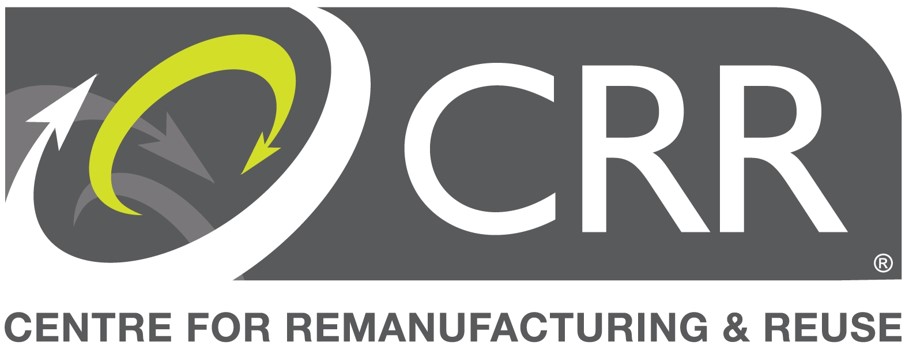
Remanufacturing: How you can get involved and benefit...
As mentioned, the scope for remanufacturing extends to virtually all industry sectors and products. Is there an opportunity here for you? Is there scope for your small manufacturing business to differentiate itself, win supply chain work and benefit? How about brainstorming and thinking how you and your SME could get involved? Here are a few examples to kick-off your thinking...
- If you operate in the supply chain of an OEM, could your small manufacturing business offer a remanufacturing service for some of their parts, perhaps linking into their maintenance and servicing operations?
- Sustainability offers real competitive advantage. It's big business and is a chance to differentiate yourself from competitors. Getting into remanufacturing, or offering it as a supply chain activity, could provide the competitive advantage and marketing opportunity for both your SME and your larger OEM customer.
- Linked to the 1st point above, as a supply chain small manufacturer, could Remanufacturing be something that could contribute to your OEM's servitization strategy (servitization being the offering of services in addition to their physical products. Advantages include longer-term revenue streams and enduring customer relations)
- Could knowledge and findings you acquire by remanufacturing an OEM's parts be fed back as engineering changes to cut costs or save time? This includes product features and functional improvements.
- Related to the above, design for manufacture and assembly (DFM and DFA) improvements can be fed back, with the resultant benefits in production lead-times, ease of execution and cost reduction. This may then feed into the development of jigs, fixtures and fittings.
- At an operational level, can you document the different stages of your remanufacturing processes for products you wish to focus on? For example, taking images at key stages, or filming and verbal explanations for important disassembly and refurbishment operations?
- Search online to find local, regional or national remanufacturing initiatives to help you network, connect with contacts and develop a plan. Get involved and commercially benefit.
Remanufacturing in action - Industrial Examples...
The Remanufacturing Industry (Courtesy of GIT)
What is the remanufacturing industry all about? This video is supported and produced by various industry associations and many key industry players. It tells you in detail what the remanufacturing of toner cartridges entails, the benefits it delivers to users, companies, and even economies.
Differences Between Used, Rebuilt and Remanufactured Auto Parts
(Courtesy of Cardone Industries)
Short video describing the differences between used, rebuilt and remanufactured auto parts.
Used parts: uncertain reliability since there's no way of knowing how the previous vehicle was driven and maintained or how long the part will last. Risky choice.
Rebuilt parts: only faulty components are replaced before the unit is reassembled for sale. This method does nothing to address the issues that may have caused the unit to fail prematurely.
Remanufactured parts: these parts are completely disassembled, cleaned, examined, and 100% tested. Product engineers identify any patterns of failure that caused the units to wear prematurely. Once a problem is identified, the units are re-engineered to correct flaws, making them better than new.
Remanufacturing - Rebuilt Transmissions to Industrial Standards
(Courtesy of ZF Friedrichshafen AG)
Remanufacturing worn-out vehicle components is increasingly important. Around the world, ZF plants like Nottingham in the UK are putting a wide variety of used parts through an industrial remanufacturing process, saving energy and conserving valuable raw materials.
The Ford Remanufacturing Process (Courtesy of Fordparts)
The Ford Remanufactured engine process is a lot like the assembly line for a new engine. Watch this video for a start-to-finish look at Ford engine remanufacturing.
Turbocharger Remanufacturing (Courtesy of ooNeringsoo)
Cat® Reman Engine Salvage Animation (Courtesy of Cat® Products)
Cat® Reman Engine Salvage Technologies are highlighted to show some of the different processes used to bring old parts back to their original specifications to ensure they provide the same quality, reliability and durability as when they were new.
Cat Reman Business Model (Courtesy of Cat® Products)
Learn all about the Cat Reman business model and how remanufacturing contributes to sustainability
